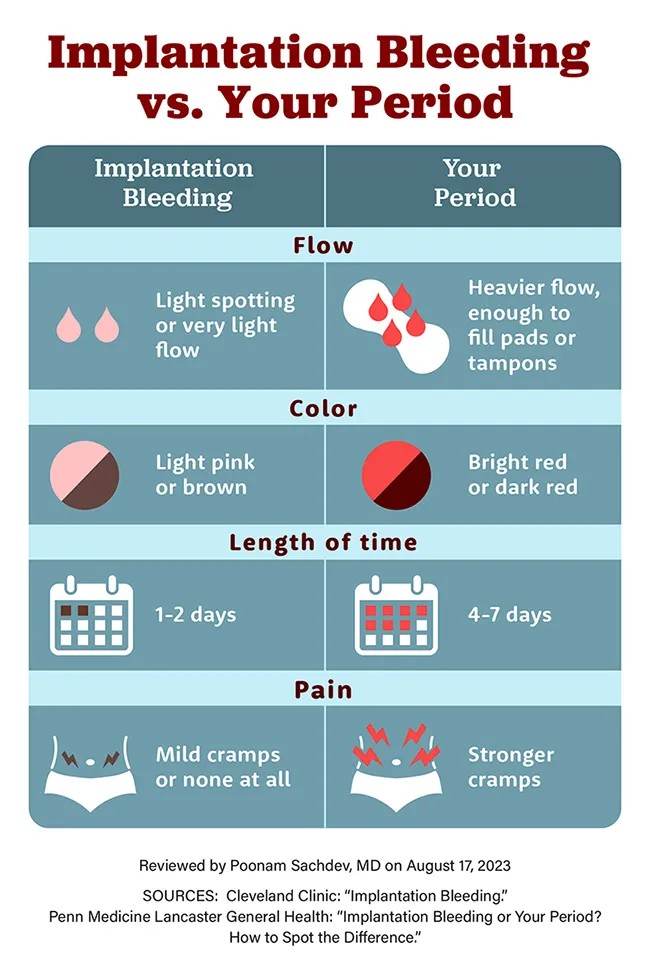Implantation bleeding is a very light vaginal bleeding that occurs in some women approximately 10 to 14 days after conception. Often mistaken for a light period, it’s actually an early indicator of pregnancy and is generally harmless, requiring no medical intervention. However, it’s crucial to distinguish it from heavier bleeding, which could signal potential issues and necessitate medical consultation.
 Infographic comparing implantation bleeding and menstrual period characteristics, highlighting differences in color, flow, and duration to help distinguish early pregnancy signs from menstruation.
Infographic comparing implantation bleeding and menstrual period characteristics, highlighting differences in color, flow, and duration to help distinguish early pregnancy signs from menstruation.
How Common is Implantation Bleeding?
Implantation bleeding is a recognized and normal aspect of early pregnancy, affecting around 25% of pregnant individuals. It’s so subtle in some cases that it might go unnoticed.
When Does Implantation Bleeding Typically Occur?
Following fertilization, when sperm meets egg, the resulting embryo journeys to the uterus to embed itself into the uterine lining. This process, known as implantation, can sometimes cause slight bleeding as the embryo attaches. This bleeding usually coincides with the time a woman expects her menstrual period. Consequently, some women may mistake it for their period and remain unaware of their pregnancy. Importantly, implantation bleeding is considered normal and does not indicate any threat to the mother or the developing baby.
Decoding Implantation Bleeding Symptoms
Implantation bleeding usually manifests before the onset of morning sickness. Common symptoms associated with implantation bleeding include:
- Color of Blood: Typically brown or pinkish in hue.
- Flow: Significantly lighter than a regular menstrual period and shorter in duration.
- Cramping: Mild or even absent.
Delving into Implantation Bleeding Color
The color of implantation bleeding is a key distinguishing factor from menstrual bleeding. Unlike period blood, which is typically bright red or dark red, implantation bleeding presents in lighter shades. It often appears as light pink, brown, or dark brown. Furthermore, its consistency is more akin to vaginal discharge rather than the heavier flow of a menstrual period.
How to Identify Implantation Bleeding
If you’re experiencing bleeding and suspect it might be implantation bleeding, consider other early pregnancy signs. The presence of these symptoms alongside light bleeding increases the likelihood of it being implantation bleeding:
- Breast tenderness and swelling
- Unexplained fatigue
- Headaches
- Nausea or upset stomach
- Vomiting (morning sickness)
- Specific food cravings or aversions
- Mood fluctuations
- Increased frequency of urination
If you remain uncertain whether you are experiencing implantation bleeding or your period, the most reliable course of action is to take a pregnancy test or consult with your healthcare provider for clarification and guidance. They can provide accurate diagnosis and peace of mind.
